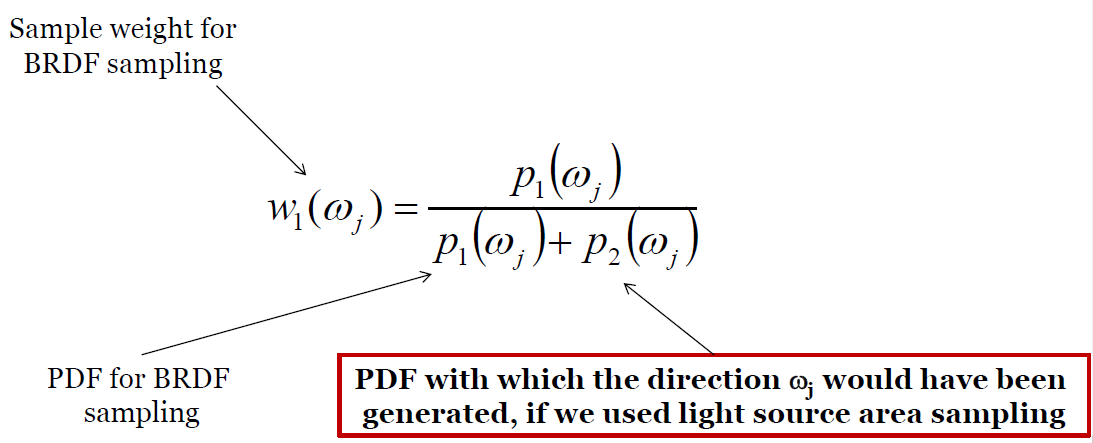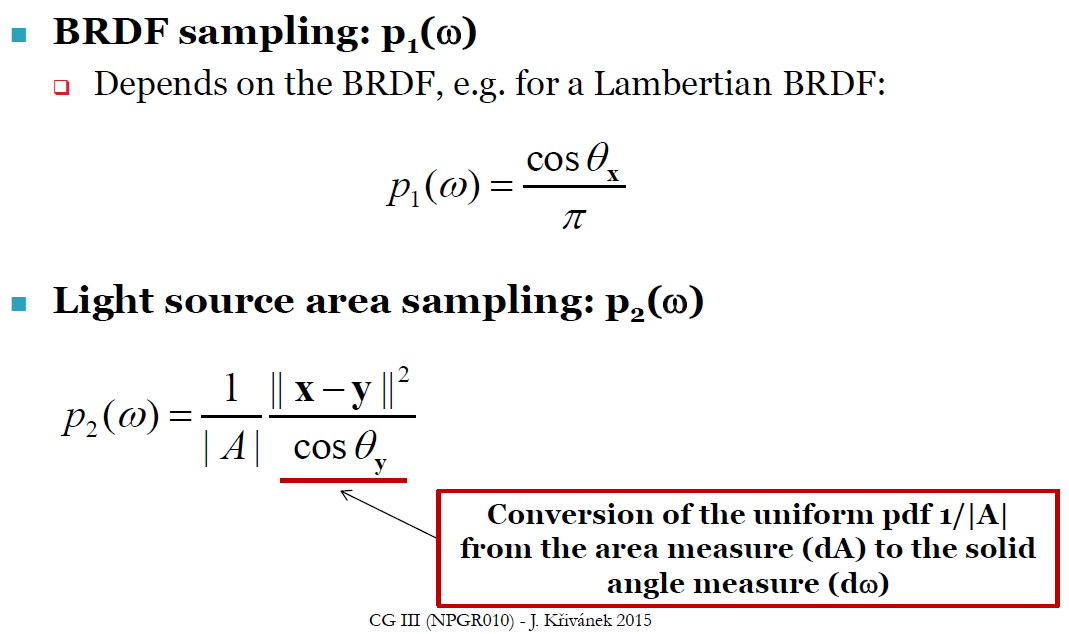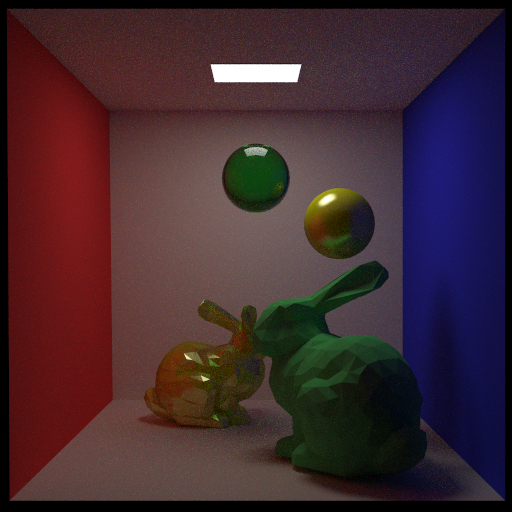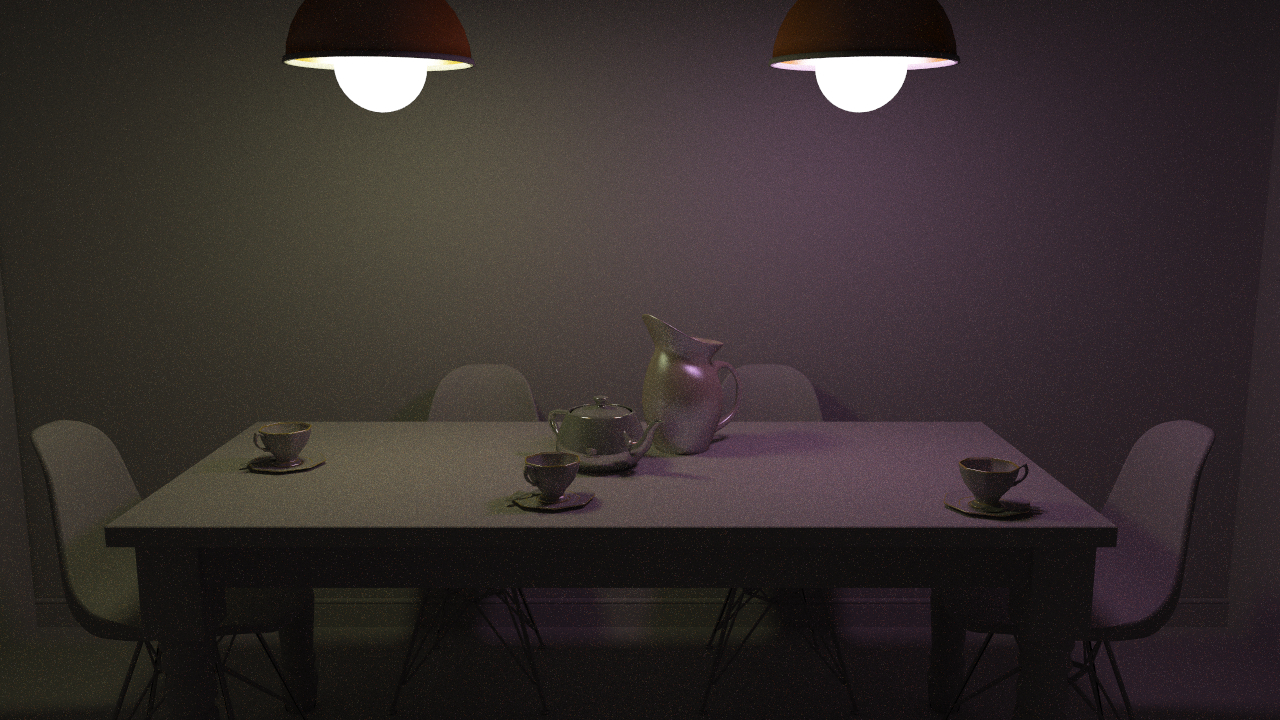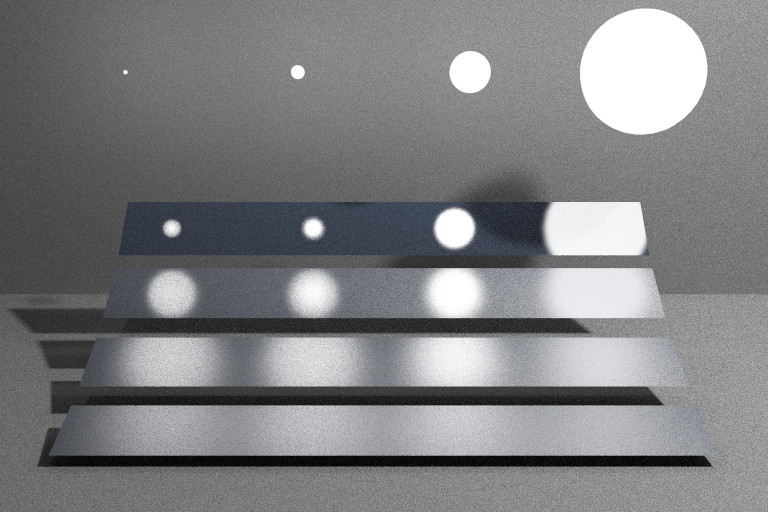- window10
- vs 2017
- 第三方库
若要修改测试内容,main文件的tracer.traceScene("scene.json", 0)中,scene.json是场景配置文件路径,0是场景index。
目前0是cbox,1是diningroom,2是veach,3是test scene。
- scene load
- 在读取场景部分,将场景参数写作json,使用nlomann json方便读取:
{ "name": "CornellBox", "root_path": "../scene/cbox/", "obj_path": "cbox.obj", "camera": { "position": [ 278, 273, -800 ], "look-at": [ 278, 273, -799 ], "up": [ 0, 1, 0 ], "fov": 39.3077, "film-resolution": [ 512, 512 ] } }, - 在载入obj部分,class
Model存储obj中的mesh group、faces、verts等内容。根据材质参数,分类不同的材质类型。 - scene包含Model,并从中提取直接光采样所需的emitters。
- 一些修改:
- cbox中顶部灯和天花板完全重合了,我下移了一些距离;
- dinningroom场景中,view space中左下角的墙壁没用缝合,留了一条黑色的空隙,我在Maya里又修改了一下;
- diningroom场景的fov应该是36;
- 在读取场景部分,将场景参数写作json,使用nlomann json方便读取:
- AABB
- 在里面加入了和ray求交的内容;
- kd tree
- 因为场景的面片树较多,所以在scene中建立kd-tree来求交;
- 目前的树高为
4*round(log10((double)model->all_objs.size()));
- multi threads
- 同样为了加速,尽量利用多线程并行计算,参考了https://stackoverflow.com/questions/36246300/parallel-loops-in-c;
- 不过,好像直接用openmp是一个更简洁快速的办法;
- primitive
- 在基类object3d上派生triangle、sphere、box及对应的求交实现;不过因为现在是读取模型,目前只用上了triangle;
- triangle: 具体的求交的矩阵推导和转换,详细参考了《realtime rendering》p748中关于三角形求交的内容;
- sphere和box的求交,直接按照课堂slides实现;
- frame
- 参考很多人的实现,class
Frame好像是很常用的结构,方便坐标转换,在局部表面的采样和下表面方向剔除; - 在class
Hit中存储一个Frame对象,记录intersect计算时,交点的局部坐标信息;
- 参考很多人的实现,class
- spp
- 为了取得一定结果又不耗费过长时间,下方测试的spp基本是50;
- sampler
- 一开始的方案是
(double)rand() / RAND_MAX,不过每次写都很冗余。为了方便生成随机数,使用封装的classSampler,在需要随机采样的函数间传递引用对象;
- 一开始的方案是
- material importance sampling
-
diffuse
- sample:
- Malley’s method: uniformly generates points on the unit disk and then generates directions by projecting them up to the hemisphere above it.
- eval
this->diffuse_reflection*Frame::cosTheta(hit.wi)*INV_PI
- pdf: cos_theta*INV_PI
- sample:
-
Phong
- sample
double cosTheta = std::powf(sample.x, 1.0 / (exponent + 1)); double sinTheta = std::sqrtf(std::fmax(1.0 - (cosTheta * cosTheta), 0)); double phi = sample.y * 2.0 * PI; v = glm::dvec3(sinTheta * std::cosf(phi), sinTheta * std::sinf(phi), cosTheta);
- eval
this->specular_reflection*(exponent + 2)*INV_TWOPI*(double)std::powf(cos_theta, exp)
- pdf
(exponent + 2) * INV_TWOPI * std::powf(cos_theta, exponent) - 方法
- 定义采样Phong的概率,这里用specular / (specular+diffuse);
- 生成随机数r0;
- 如果r0<p, 采样phong,反之lambert;
- 联合PDFs: PDF=p*pdf_phong+(1-p)*pdf_lambert
- sample
-
glass
- 计算菲涅尔系数,判断折射和反射,反射部分完全镜面反射
-
- MIS
-
cbox:
-
my scene:
-
diningroom:
-
veach
